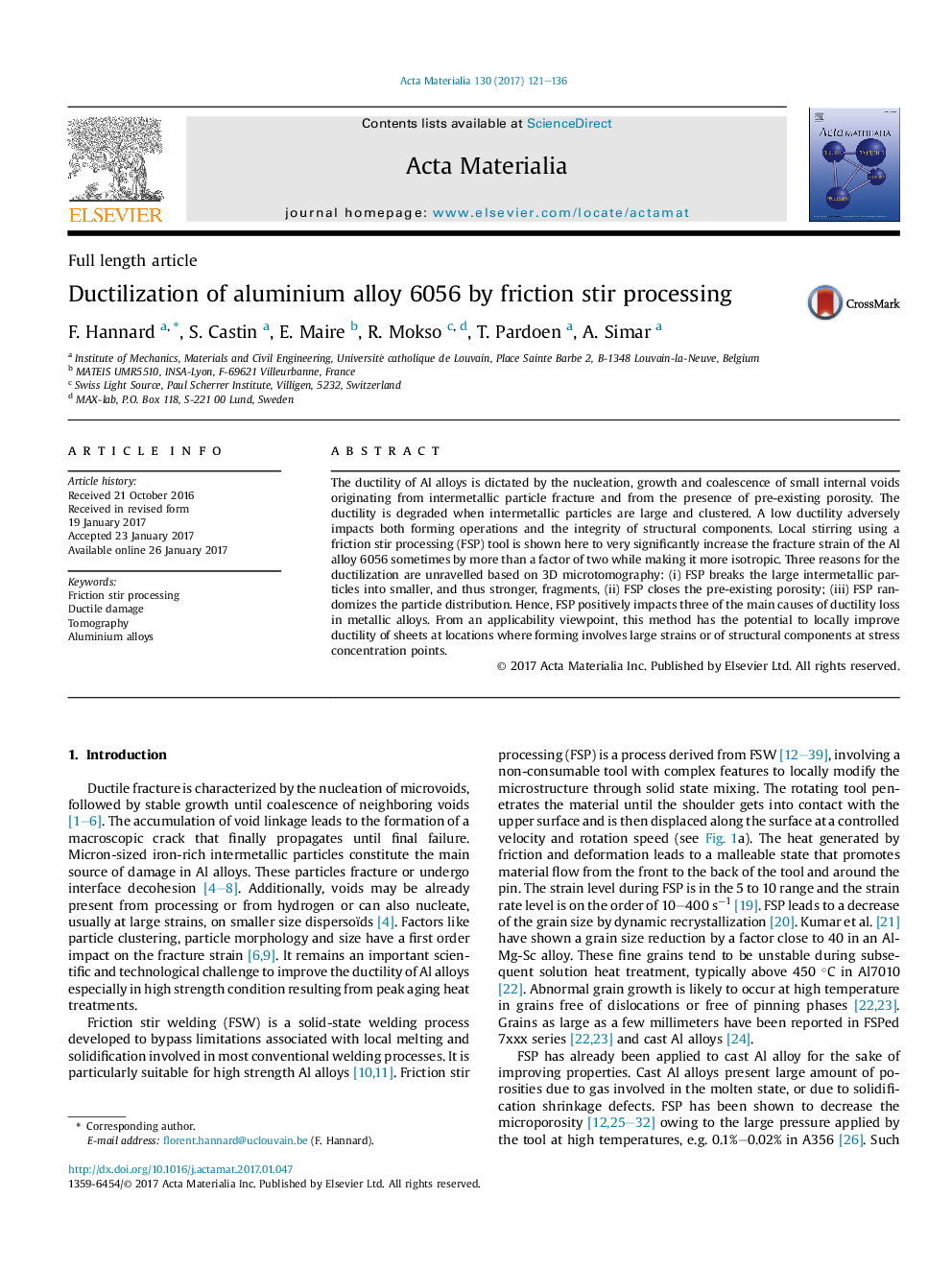| Article ID | Journal | Published Year | Pages | File Type |
|---|---|---|---|---|
| 5436024 | Acta Materialia | 2017 | 16 Pages |
The ductility of Al alloys is dictated by the nucleation, growth and coalescence of small internal voids originating from intermetallic particle fracture and from the presence of pre-existing porosity. The ductility is degraded when intermetallic particles are large and clustered. A low ductility adversely impacts both forming operations and the integrity of structural components. Local stirring using a friction stir processing (FSP) tool is shown here to very significantly increase the fracture strain of the Al alloy 6056 sometimes by more than a factor of two while making it more isotropic. Three reasons for the ductilization are unravelled based on 3D microtomography: (i) FSP breaks the large intermetallic particles into smaller, and thus stronger, fragments, (ii) FSP closes the pre-existing porosity; (iii) FSP randomizes the particle distribution. Hence, FSP positively impacts three of the main causes of ductility loss in metallic alloys. From an applicability viewpoint, this method has the potential to locally improve ductility of sheets at locations where forming involves large strains or of structural components at stress concentration points.
Graphical abstractDownload high-res image (321KB)Download full-size image
